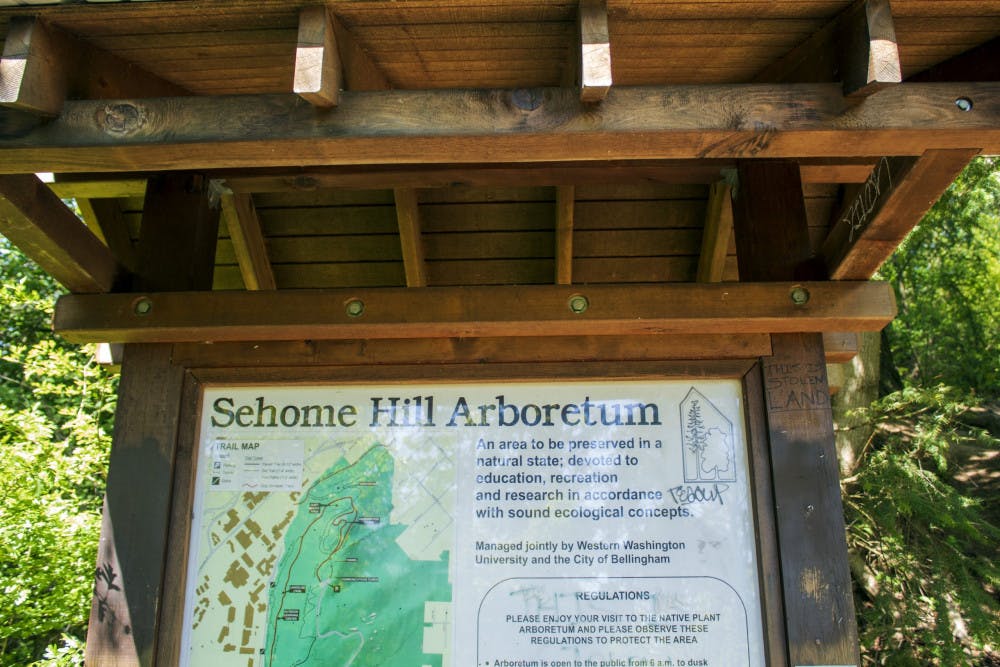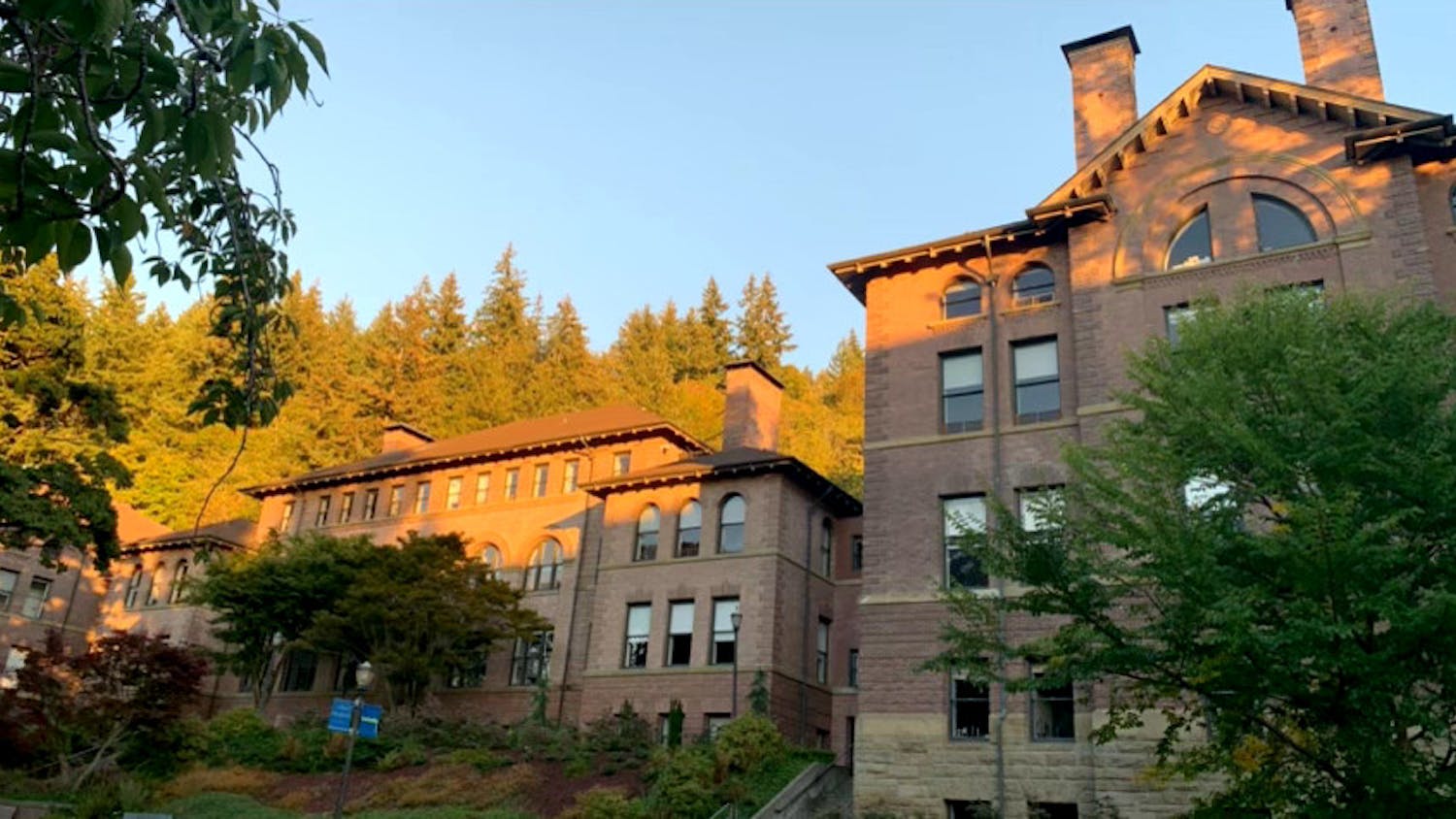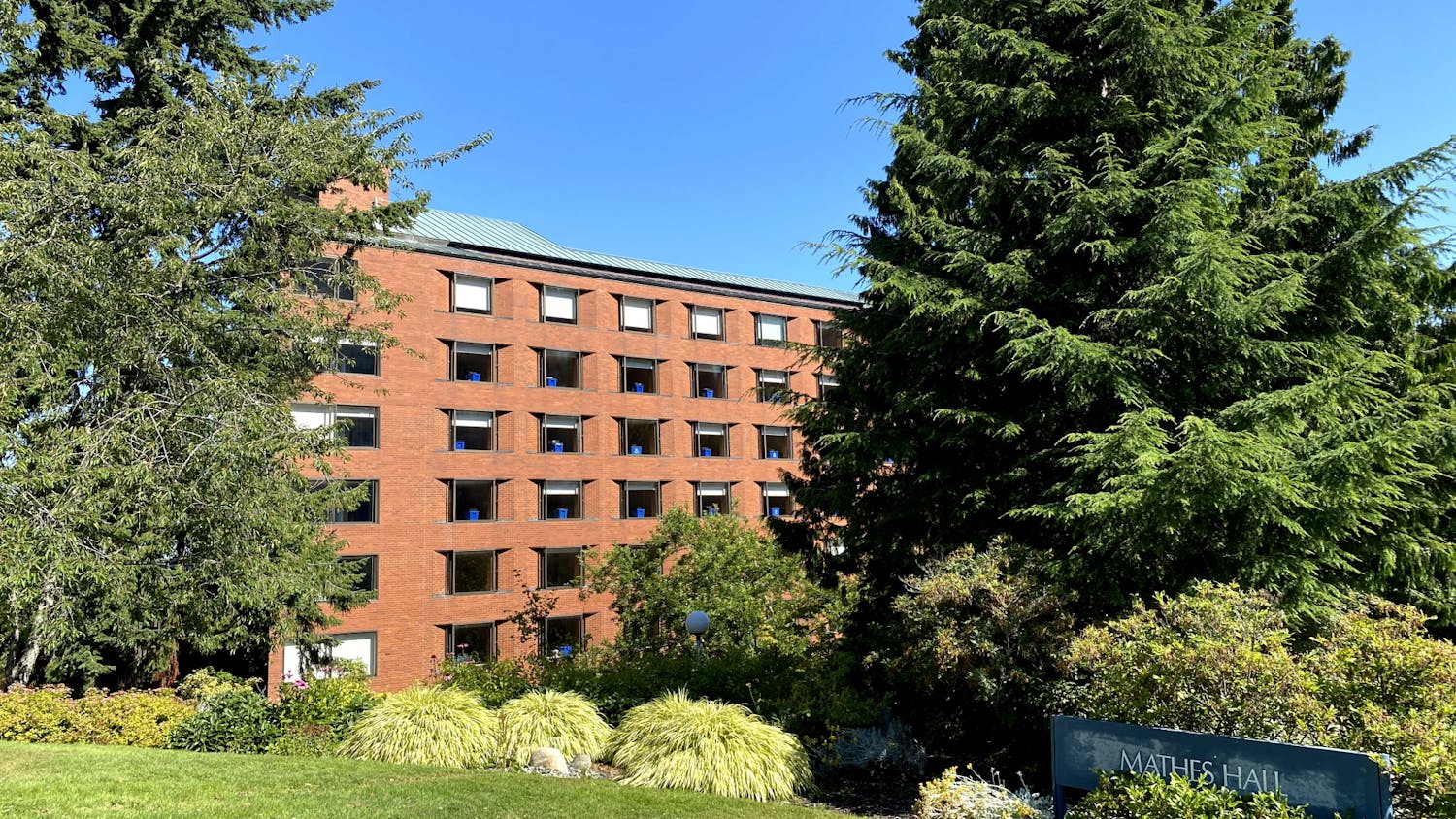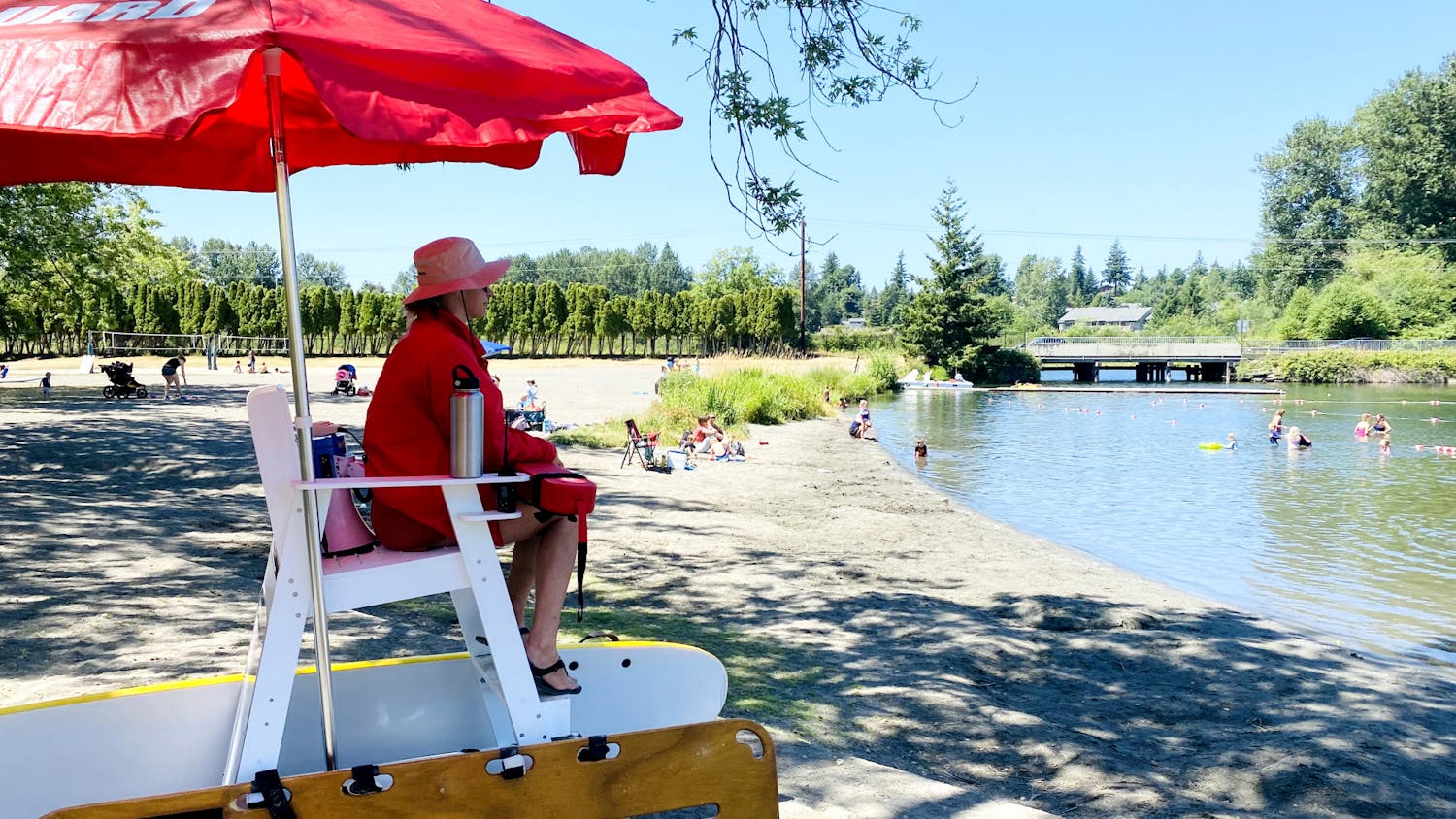Nestled in the backdrop of Western Washington University’s main campus, the Sehome Hill Arboretum provides students and the Bellingham community with a forest that is as mysterious as it is green. The Arboretum is filled with everything from secret art pieces to a watch tower that views the Bellingham Bay.
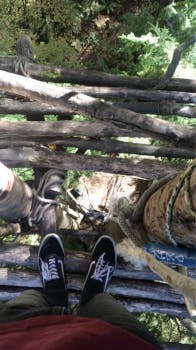
One of the arb's hidden and unauthorized gems is a tree fort, precariously balanced nearly 30 feet off the ground. // Video by Nate Sanford
“The Arboretum is one of the reasons why Bellingham is a great place to live,” said Steve Janiszewski, the parks operations manager of the City of Bellingham. “You can walk out right out of your dorm, or right on off, where you're having a class and walk up into the forest and walk up to the top of the Arboretum and climb the tower and look down over the city in Bellingham Bay.”
Ownership of the Arboretum is split between Western and the City of Bellingham. Western is currently in the process of working with the city to find a plot of land that will soon become home to a Coast Salish style longhouse.
According to Bellingham’s Parks and Recreation Department, the Arboretum is around 175.5 acres in size and is directly connected to Western’s campus. The area provides students with quick access to nature.
“I like to sit in the hideaways near the cliff face and enjoy the quiet ambiance,” third-year student Sophia Beach said in an email. “I visit to relax and be away from screens.”
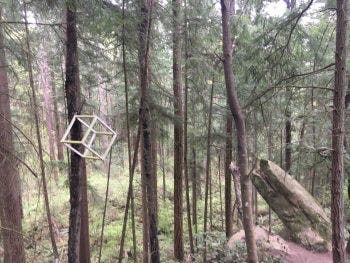
Given the size of the Arboretum, there are many secret spots that students frequent. These spots and sights aren’t marked on any maps and many students will not disclose the location.
Even some of the spots that are on the map are near impossible to find. There’s a tree fort somewhere behind the Communications Building hidden in the trees.
Some sights include a yin-yang made out of moss, artwork on bricks, a mini fairy forest made of stumps and various rope swings hanging from the trees. Despite their popularity, many spots are not allowed to be there because of the damage they cause to the park.

“We found a large cargo netting that was attached to different trees in the area, and then people were using it like a big hammock,” Janiszewski said. “Tying things off to trees could damage the bark of the tree. They could be putting nails or fasteners in trees and that's not permitted.”
The placement of the artwork is debated by visitors and park staff alike. While some people see graffiti, others see unique creativity.
“Not in all parks, is it necessarily appropriate to have art,” Washington State Parks Ranger Amber Forest said. “Not all landscapes are going to work with it, but for some landscapes it's really appropriate. I think that it blends creativity into a natural landscape that is unique.”
Janiszewski said that the Arboretum isn’t meant to be anything other than a forest with designated trails.
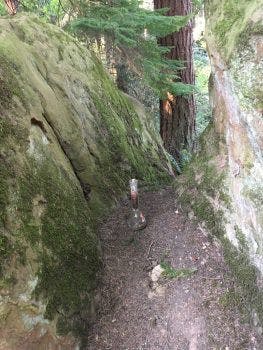
“The Arboretum is meant to be more of a natural area, and it's really set aside for preservation,” Janiszewski said. “To that end, we don't allow any large events, large races and there's no bikes allowed on the trails except for the road.”
Despite the effort to preserve the Arboretum, there are still frequent instances of litter.
“I always pass by the graveyard of makeshift bongs to see what desperate measures were taken in desperate times,” Beach said.
Still, the Arboretum maintains its place as a natural beauty for the people who visit it.
“Scientifically, spending time outside has been proven to be healthy for you,” Forest said. “I think it also reconnects you to nature, which is connected to all of us. In that way, it enriches your life.”
Cameron Martinez (she/her) is the editor-in-chief for The Front this quarter. She is majoring in visual journalism with a double minor in queer studies and anthropology. She has written stories ranging from making sushi on a budget to murder hornets on campus. When not reporting, she enjoys listening to podcasts and playing arcade games.
You can reach her at me.thefront@gmail.com or cameron.westernfront@gmail.com. Her Instagram handle is @doctorcameron.


